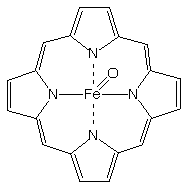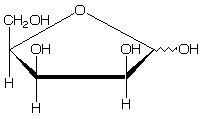
Possible models: Molecular mechanics with MM3 force field.
Molecular mechanics with OPLS force field.
Semiempirical ZINDO method.
Semiempirical AM1 method.
Semiempirical PM3 method.
a) Lowest energy structure for cyclodecane (25 points).

b) UV spectrum (i.e., energies to reach excited electronic states) of iron-oxo porphyrin (25 points).

c) Calculation of the gas-phase activation energy for the atmospherically important reaction HO* + HOO* -> H2O + O2 (25 points).
d) "Flexibility" of chymotrypsin in aqueous solution (a typical way to measure this is to examine the mean-square-displacement of the [[alpha]]-carbons in the peptide backbone from their average positions during the course of a dynamics simulation) (25 points).
e) Gas-phase dipole moment for the lowest energy structure of the sugar D-lyxose (25 points).

f) Pictures of the [[pi]] orbitals for pyridine (25 points).

2. Implicit in the above problem was that none of the properties being calculated was available experimentally. Given that, explain how you might assess the quality of the answers you get from your calculations in different instances. You don't have to do this on a molecule by molecule basis! Rather, I am looking for some general discussion of how you decide on the trustworthiness of your results. A good answer will provide some hypothetical situations for discussion (e.g., I could do x and compare to y and if situation z were to be true I would draw conclusion w, etc.) and/or include specific examples which may or may not be derived from the above problems (50 points).